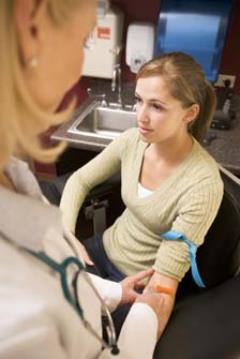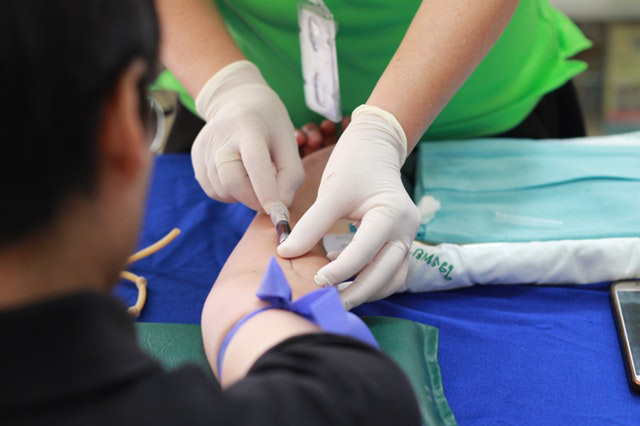The Definitive Guide for Northeast Medical Institute - New Haven Campus Phlebotomy Course & Cna Class
The Definitive Guide for Northeast Medical Institute - New Haven Campus Phlebotomy Course & Cna Class
Blog Article
Northeast Medical Institute - New Haven Campus Phlebotomy Course & Cna Class Things To Know Before You Buy
Table of ContentsThe Only Guide for Northeast Medical Institute - New Haven Campus Phlebotomy Course & Cna ClassHow Northeast Medical Institute - New Haven Campus Phlebotomy Course & Cna Class can Save You Time, Stress, and Money.All About Northeast Medical Institute - New Haven Campus Phlebotomy Course & Cna ClassThe Ultimate Guide To Northeast Medical Institute - New Haven Campus Phlebotomy Course & Cna ClassNortheast Medical Institute - New Haven Campus Phlebotomy Course & Cna Class Fundamentals ExplainedNortheast Medical Institute - New Haven Campus Phlebotomy Course & Cna Class Things To Know Before You Buy
The use of such devices should be gone along with by other infection avoidance and control methods, and training in their usage. Not all safety tools are suitable to phlebotomy. Prior to choosing a safety-engineered tool, customers need to extensively explore readily available gadgets to determine their appropriate usage, compatibility with existing phlebotomy techniques, and effectiveness in securing staff and people (12, 33).For settings with reduced sources, cost is a driving aspect in purchase of safety-engineered tools. Where safety-engineered devices are not available, skilled use of a needle and syringe is acceptable.
labelling); transportation conditions; analysis of outcomes for medical administration. In an outpatient department or clinic, give a dedicated phlebotomy cubicle containing: a clean surface area with 2 chairs (one for the phlebotomist and the various other for the individual); a hand clean basin with soap, running water and paper towels; alcohol hand rub. In the blood-sampling space for an outpatient division or facility, provide a comfy reclining sofa with an arm remainder.
Northeast Medical Institute - New Haven Campus Phlebotomy Course & Cna Class Fundamentals Explained
Make sure that the indications for blood tasting are clearly specified, either in a written procedure or in recorded instructions (e.g. in a laboratory kind). In all times, follow the techniques for infection prevention and control noted in Table 2.2. Infection prevention and control practices. Gather all the devices needed for the procedure and area it within risk-free and easy reach on a tray or trolley, guaranteeing that all the things are clearly noticeable.
Present yourself to the client, and ask the client to state their full name. Examine that the laboratory kind matches the client's identity (i.e. match the individual's information with the research laboratory kind, to guarantee precise identification).
Make the patient comfortable in a supine placement (if feasible). The individual has a right to refuse a test at any kind of time before the blood sampling, so it is important to make sure that the person has actually comprehended the procedure - PCT Classes.
An Unbiased View of Northeast Medical Institute - New Haven Campus Phlebotomy Course & Cna Class
Extend the person's arm and evaluate the antecubital fossa or lower arm. Find a blood vessel of an excellent size that shows up, straight and clear. The layout in Section 2.3, reveals common settings of the vessels, yet numerous variants are possible. The typical cubital blood vessel exists in between muscle mass and is normally the most very easy to puncture.
DO NOT insert the needle where veins are diverting, since this raises the chance of a haematoma. The vein ought to be noticeable without using the tourniquet. Situating the vein will help in establishing the proper size of needle. Apply the tourniquet about 45 finger widths above the venepuncture site and re-examine the vein.
Haemolysis, contamination and existence of intravenous liquid and medicine can all change the outcomes (39. Nursing personnel and medical professionals might access central venous lines for specimens following protocols. Samplings from main lines bring a risk of contamination or wrong lab examination results. It is acceptable, yet not perfect, to injure specimens when initial introducing an in-dwelling venous device, before attaching the cannula to the intravenous fluids.
Northeast Medical Institute - New Haven Campus Phlebotomy Course & Cna Class for Dummies
Failing to permit enough contact time increases the threat of contamination. DO NOT touch the cleansed website; in certain, DO NOT position a finger over the vein to lead the shaft of the subjected needle.
Ask the patient to develop a hand so the capillaries are a lot more noticeable. Get in the blood vessel promptly at a 30 level angle or much less, and remain to present the needle along the blood vessel at the most convenient angle of entrance - Phlebotomy Training. When sufficient blood has been collected, launch the tourniquet BEFORE withdrawing the needle
The 7-Minute Rule for Northeast Medical Institute - New Haven Campus Phlebotomy Course & Cna Class
Take out the needle delicately and use gentle pressure to the site with a tidy gauze or completely dry cotton-wool ball. Ask the individual to hold the gauze or cotton wool in position, with the arm prolonged Your Domain Name and raised. Ask the patient NOT to flex the arm, because doing so triggers a haematoma.

The Main Principles Of Northeast Medical Institute - New Haven Campus Phlebotomy Course & Cna Class
Do not push the syringe plunger because added stress enhances the danger of haemolysis. Where feasible, maintain the tubes in a shelf and move the shelf towards you. Inject downwards into the ideal coloured stopper. DO NOT get rid of the stopper because it will launch the vacuum cleaner. If the example tube does not have a rubber stopper, infuse exceptionally gradually right into television as reducing the pressure and speed made use of to move the specimen reduces the danger of haemolysis.

Report this page